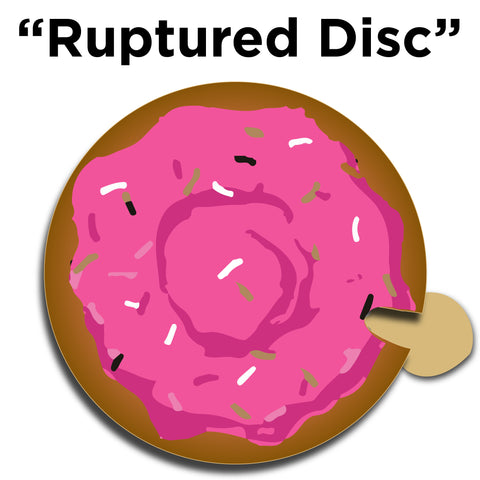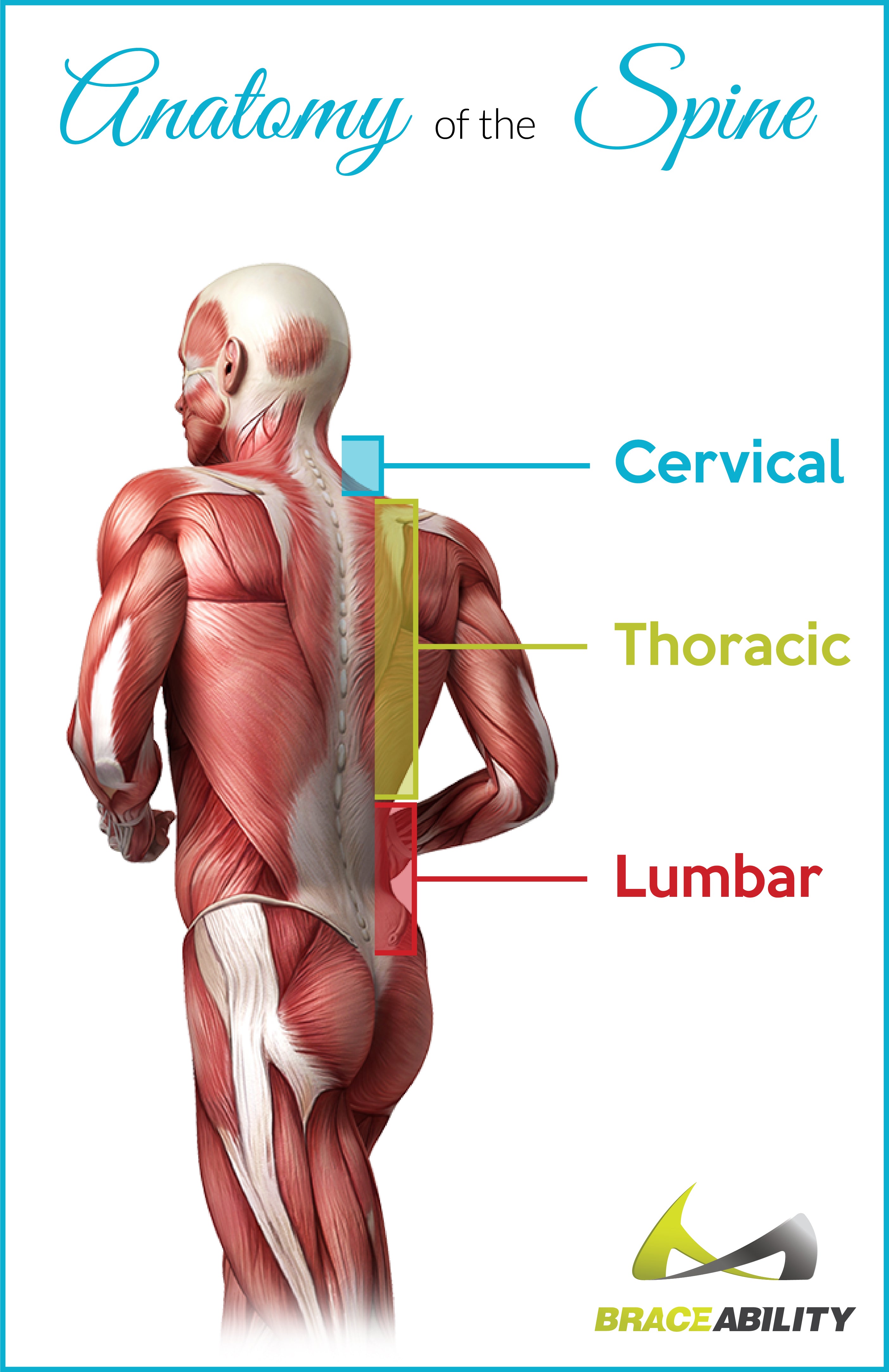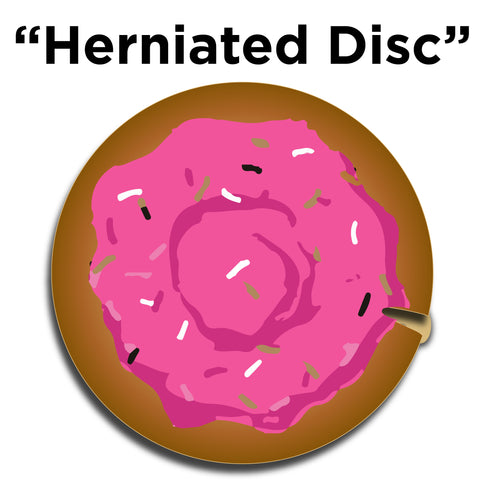Slipped & Ruptured Discs
What Exactly Is A Slipped Disc?

Unfortunately, injuring your spinal discs can be a painful and confusing experience. Your doctor may diagnose your pain as a bulging disc, herniated disc, ruptured disc, or even slipped disc. While these conditions may have different names, they ultimately are a different stage or form of each other.In order to understand the underlying cause of the pain you might be experiencing in your spine, you must understand the structure of your vertebrae first. Your spine consists of 26 bones stacked up upon each other, creating your vertebrae. Your vertebra doesn’t just consist of bones, but spinal discs as well. Your spinal discs are composed of two parts: a tough outer portion, and a soft inner core. These discs essentially perform as your shock absorbers in between your bones when you walk, jump, run, or twist. The outside of your discs, or outer portion, consists of collagen fibers. While the inside of your discs, or inner core, consists of a network of fibers. Your discs can be compared to a jelly donut, with a harder cake outside and a soft jelly inside.
So what is a slipped disc? Anatomically speaking, a slipped disc isn’t technically a medical condition. A slipped disc is just another name for a herniated disc, as these two terms are usually used interchangeably. In fact, with a slipped disc, your discs don’t actually “slip.” As confusing as that sounds, we’re here to break it down for you!
A slipped disc, or herniated disc, is when the inner core pushes towards the wall of the outer piece of your disc. This leads your disc to push on the nearby nerve root, which is the cause of your pain and discomfort.
Is a Ruptured Disc the Same as a Slipped Disc?
As mentioned previously, the different conditions such as bulging, herniated, slipped, and ruptured disc are essentially different stages of the same condition. We simplify it by comparing it to a jelly donut in three different stages to help you better understand what happens to your discs. In this example, the wall of your disc is the cake part of the doughnut, and the nucleus inside your disc is the delicious jelly filling. Hungry yet?
Stage 1: Bulging disc

- Occurs when the disc pushes out of its normal position and begins to invade the space of your spinal nerves. The main difference between this stage and the other two is the wall of the disc doesn’t tear completely through yet.
Stage 2: Herniated disc or slipped disc
- Now the wall starts to tear through, eventually resulting in the nucleus tearing (leaking) through the wall.
Stage 3: Ruptured disc

- Occurs when the nucleus pushes completely outside of the disc. The fluid leaks out of the outside region, this is also known as a sequestered disc.
Besides these common spinal disc injuries, you might be diagnosed with degenerative disc disease. Aside from the stages above, degenerative disc disease or DDD is the effect of your body’s natural aging process. This is the weakening of one or more of the discs between your vertebrates. When this occurs, your discs flatten and lose water content, which causes pain when you’re walking, running, or jumping.
What Are Common Signs & Symptoms of a Slipped Disc In My Lower Back or Neck Region?
A slipped disc can occur in any region of your spine: lumbar, thoracic, or cervical. But it’s more common for you to experience it in your lower or lumbar back region. Some individuals may not experience any symptoms, whereas others may experience the following:

Cervical or neck slipped disc symptoms:
- Numbness, tingling, or weakness in your shoulder, neck, arms, or hands
- Pain experienced in your shoulder, neck, arms, or hands
- Muscle weakness
- Usually, symptoms increase with movement
- Pain on one side of your body
- Sciatica or nerve root pain
- Pain worsens at night
Lumbar or lower back slipped disc symptoms:
- Pain experienced in your buttocks, legs, or knees
- Numbness, tingling, or weakness in your buttocks, back, legs, or feet
- Issues controlling your bowel or bladder movements
- Muscle weakness
- Pain on one side of your body
- Sciatica or nerve root pain
- Usually, symptoms increase with movement such as coughing
- Pain worsens at night
What Causes a Slipped or Ruptured Disc In My Back?
The most common cause of slipped vertebrae in your back is the aging process. When you age, your spinal discs weaken and lose water content, which in turn can break down the walls of your discs. In addition to aging, there are other factors that may lead to a slipped disc. Answer the questions below to figure out what might be the cause of your back pain:
Q: Do you smoke regularly?
Smoking reduces the flexibility in your discs, which may lead to tears or rips in the outer wall.
Q: Have you had any recent trauma to your back or spine?
Injuries such as falls or blows to the back can cause a sudden rupture or herniated disc.
Q: Have you had repetitive injuries to your back?
Having just one injury to your back makes you more susceptible to future back pain, including a slipped or ruptured disc.
Q: Do you have an occupation that requires a lot of lifting or sitting?
Jobs such as a truck driver, construction worker, an office job, warehouse workers, etc. are more prone to injuries such as a slipped disc because they are frequently placing stress and tension on all areas of their back.
Q: Do you weight lift frequently?
In relation to the question above, weightlifting can cause extra stress and pain to your back, especially in your lower back region. If lifting weights or carrying heavy objects, make sure to use these correct lifting techniques so you don’t cause more damage to your back.
Q: Are you between the ages of 30-50?
The aging process is a common cause of slipped or ruptured discs. As you age, your spinal discs become weaker, which in turn makes you more prone to such injuries.
Q: Are you a male?
Men have a higher chance of developing this condition
Q: Are you considered obese or plus size?
Being a larger individual makes you more susceptible to many different back conditions including osteoporosis, osteoarthritis, degenerative disc disease, spinal stenosis, and a slipped disc. When you’re carrying around extra weight, your spine works harder to keep our back and shoulders aligned, this excess work puts strain on your spine.
How Can I Treat a Slipped Disc?
Depending on the level of severity and how far your disc has moved, you may be able to continue to be active throughout your condition. It actually might be more helpful than harmful to continue with your daily activities. This will help speed up your recovery and keep your back moving. In case you’re experiencing pain while doing your daily activities, you may be able to reduce the pain caused from your slipped or herniated disc at home by using hot or cold packs, or by taking anti-inflammatory medications. If such methods do not alleviate your symptoms or your pain worsens, try the following:
- Exercises or stretching for a slipped disc help to strengthen your back and shoulder muscles.
- Avoid heavy lifting or stay away from improper lifting techniques that may worsen your condition.
- Try remaining active so that you don’t lose muscle tone and stiffen your joints. Try low impact activities such as walking, swimming, or water walking.
- Wearing a back brace with a rigid back panel can help immobilize your spine to prevent further disc injury and relieve some pain by reducing strain on your disc.
- Physical therapy to help your muscles recover from your injury and reduce your pain.
- Avoid lifting, running, twisting, sitting for a long period of time as this may aggravate your symptoms.
- It’s advised to sleep on a firmer mattress in a comfortable position.
- Surgery may be considered if your symptoms have worsened or cannot be treated with the conservative methods above.
- During surgery, they will remove the slipped part of the disc. This is also known as a discectomy.







